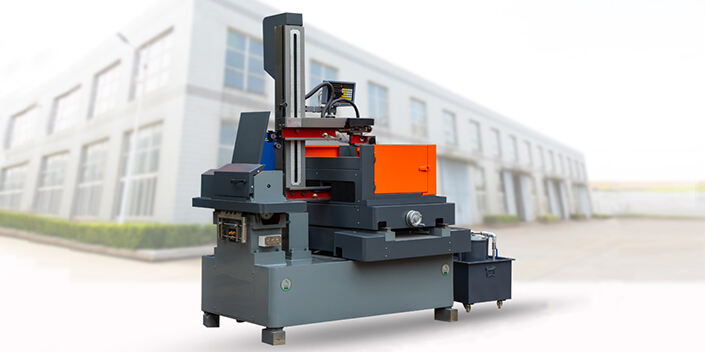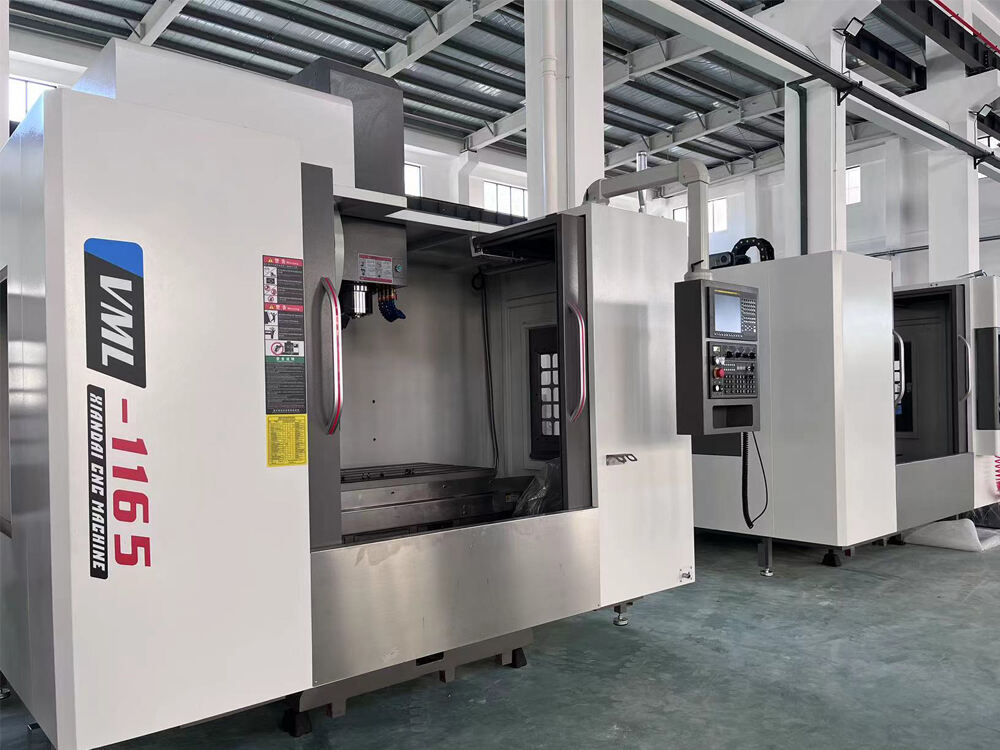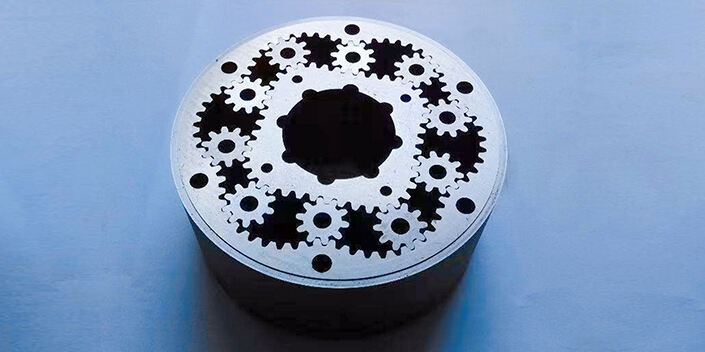How EDM Wire Cutting Machines Achieve Precision
The Science Behind Electrical Discharge Machining
EDM, or Electrical Discharge Machining, gives manufacturers the kind of precision needed for really intricate designs. The process works by creating controlled sparks that erode material from the workpiece. What makes this technique stand out is how it harnesses electrothermal energy to produce shapes that would be nearly impossible with conventional machining approaches. Tests have shown EDM can hit tolerances around plus or minus 0.002 millimeters, which is pretty remarkable. Behind this level of accuracy lies a specialized power supply system that sends out rapid electrical pulses, gradually sculpting the workpiece exactly as needed. This fine level of control explains why EDM remains so valuable when dealing with complicated parts and tight specifications across various industries.
Role of Spark Erosion in Wire EDM Processes
Spark erosion plays a really important part in Wire EDM technology because it allows for super precise cutting without any actual physical contact between tools and materials, which means the cutting tools last much longer. What happens during spark erosion? Well, basically high voltage electricity creates these intense heat bursts that melt away tiny bits of material from whatever we're working on. This technique works especially well on tough metals and conductive substances, which makes it indispensable in fields such as aircraft manufacturing and car production where complex shapes are needed. Getting the most out of this process requires careful control over how often those electrical sparks happen and how long they last. When done right, manufacturers can achieve amazing levels of detail while keeping their tools intact for longer periods of time, something that's absolutely critical when creating those intricate designs that modern engineering demands.
Thermal Regulation Systems for Micro-Accuracy
Getting micro-level precision right in EDM wire cutting machines depends a lot on good thermal management. The systems work by controlling heat so temperatures stay stable while the machine runs. Modern cooling setups pump coolant around to take away all that excess heat from machining processes, which helps keep parts dimensionally accurate. When temperatures fluctuate too much, materials tend to expand unpredictably and ruin the quality of cuts. That's why many manufacturers now equip their machines with advanced thermal sensors and control mechanisms. These improvements boost repeatability across production batches. Some systems can achieve tolerances below 0.001 mm, something absolutely necessary for industries where tiny details matter most like aerospace or medical device manufacturing.
Core Components of Wire Discharge Machining Systems
Brass/Cuprum Electrode Wire Specifications
Selecting the right electrode wire material matters a lot for wire EDM machines since it impacts how well they cut and what kind of surface finish they produce. Most shops go with brass or copper alloys because these materials stand up pretty well to erosion while conducting electricity effectively. Brass tends to be the go to option when conditions get tough or when dealing with harder materials thanks to its good mix of durability and conductivity properties. Wire thickness typically falls somewhere between 0.1mm and 0.3mm, which makes all the difference in achieving fine details during cutting operations. Things like tensile strength, how well electricity flows through the material, and how stable it stays under heat really affect both how fast cutting happens and overall machine efficiency. That's why picking the appropriate wire isn't just some minor detail but actually one of those key decisions manufacturers need to make when setting up their machining processes.
Dielectric Fluid Circulation Mechanisms
Dielectric fluids play a really important role in electric discharge machining systems, acting both as insulation and coolant at the same time. These fluids help generate sparks that remove material from the workpiece while keeping things cool enough so neither the wire nor the part gets damaged. Getting good circulation going through the system matters a lot for all this to work properly. Most experienced machinists recommend going with refined versions of dielectric fluid since they tend to conduct electricity better and make the whole machining process more efficient. Some special types even come with better flushing properties which means cleaner cuts and higher accuracy overall. Most EDM setups have built-in filtration and circulation components specifically designed to keep the fluid clean and free from contaminants. This helps maintain top performance levels and reduces downtime caused by maintenance issues. Managing dielectric fluids correctly makes all the difference when it comes to getting consistent results out of wire EDM operations.
CNC Integration for Complex Contouring
When manufacturers integrate Computer Numerical Control (CNC) tech into their wire EDM setups, they get a whole new level of precision when cutting contours. The machines can now create really intricate shapes much faster than before. Most CNC systems come with sophisticated software packages that help operators design complicated patterns without breaking a sweat. These programs automate all those tedious repeat tasks too, which means shops see a noticeable boost in productivity across the board. What makes these systems so valuable is how adaptable they are for 3D machining work. If there's an update needed on a part design, the CNC system catches up quickly, shaving around 30% off typical production timelines. For anyone working in wire discharge machining, this shift toward CNC integration isn't just about better results it's becoming essential for staying competitive in today's market where customers demand both accuracy and speed.
Industrial Applications of EDM Spark Technology
Aerospace Turbine Blade Manufacturing
EDM tech plays a really important role in the aerospace industry, particularly when it comes to making those turbine blades that need to be super precise and reliable. After all, these parts have to handle mind-blowing temperatures and pressure levels during operation, so getting the measurements right matters a lot. According to various industry reports, using EDM for blade production cuts down on wasted materials by around half, which obviously saves money and makes better use of resources overall. Real world testing backs this up too many case studies show that blades made with EDM techniques end up with surfaces so smooth they're hard to beat, plus they hold up much better under harsh operating conditions something absolutely essential for planes flying at high altitudes where failure isn't an option.
Medical Device Micro-Feature Machining
Medical device manufacturers rely heavily on EDM wire cutting machines when they need to create those tiny details in implants and surgical tools. Getting those measurements right at microscopic levels matters a lot for both patient safety and how well the devices actually work. The numbers show EDM technology can cut features down to about 0.01 mm, which makes all the difference for those complex designs we see in modern medical equipment. Another big plus with EDM is that it minimizes material warping during production. This becomes really important when thinking about FDA regulations and other strict quality controls that govern medical devices across the board.
Automotive Injection Mold Fabrication
Wire EDM has become pretty much standard practice across the automotive industry these days, especially when it comes to making those complex injection molds needed for car parts. What makes EDM so valuable is its ability to create molds that just fit right, which means fewer defective parts coming off the assembly line. Manufacturers notice this difference in real world applications too. Parts made with EDM molds generally last longer because the molds themselves are just better quality. Looking at what's happening in auto manufacturing right now, companies keep finding new ways to apply EDM tech to their mold designs. This isn't just about efficiency gains either it's opening up possibilities for creating parts that would have been impossible with traditional methods just a few years ago.
Technical Advantages of Modern Wire EDM
Non-Contact Cutting Eliminates Material Stress
Wire EDM has some pretty big benefits because it cuts without actually touching the material being worked on. Traditional machining usually requires physical tools pressing against what's being cut, but wire EDM works differently. Instead, it uses electrical sparks to melt away material, so there's no direct contact at all. This makes a huge difference since physical pressure can warp or damage sensitive parts. Studies have shown time and again that when we reduce mechanical stress during manufacturing processes, parts tend to last longer and perform better overall. For manufacturers working with fragile materials or those sensitive to heat changes, this non-contact approach really shines. Keeping the structure intact becomes much easier, which means these components will function as intended without unexpected failures down the line.
Capability for 30°+ Taper Angle Machining
Wire EDM machines today can cut tapers over 30 degrees, something that wasn't possible just a few years ago. This feature matters a lot for industries like aerospace and automotive manufacturing where parts often have complicated shapes and tight corners that need exact angles. The aerospace industry especially benefits from these capabilities since better tapering improves how air flows around engine components and other critical parts. Manufacturers are finding that being able to make those steep cuts means they can produce parts that meet tough engineering specs without compromising on quality or function. For shops working on advanced prototypes or production runs with complex geometry, having access to this kind of precision cutting has become almost essential.
Surface Finish Quality Down to Ra 0.08µm
EDM technology today can produce surface finishes down to around Ra 0.08 microns, something really important when working on parts that need extreme precision. Take medical device manufacturing for instance, where tiny surface irregularities might actually impact how well a component functions over time. Research has shown that parts made using EDM tend to have better coating adhesion properties and generally resist corrosion more effectively than those produced through other methods. This matters a lot in applications where reliability is crucial. Another benefit worth mentioning is that these excellent surface finishes mean manufacturers don't have to spend extra time and money on post processing steps. Less finishing work translates into faster production cycles and smoother overall operations in factories.
Emerging Innovations in EDM Electrical Discharge Machining
AI-Powered Process Optimization Algorithms
More and more manufacturers are starting to bring AI into their EDM operations these days, completely changing the game when it comes to getting better performance out of their machines. These smart algorithms crunch through mountains of operational data so they can spot when tools are wearing down and tweak settings on the fly to keep production running smoothly. Some shops report cutting down their wire EDM cycle times around 15% after implementing AI systems, which adds up to real money saved over time. What makes AI really valuable though is its ability to learn from previous machining runs. By looking at historical data from similar jobs, the system can suggest better tool paths and setup strategies that actually improve precision across the board while still keeping things efficient.
Hybrid Additive/Subtractive Manufacturing Integration
Combining additive and subtractive manufacturing approaches represents something pretty revolutionary for EDM technology these days. When companies merge 3D printing with traditional wire EDM methods, they end up creating parts with really complicated shapes but still hit those tight tolerance requirements that matter so much in serious applications. Industry reports indicate these mixed methods actually reduce wasted materials and save money somewhere around 25% when compared against older manufacturing practices. What makes this combo work so well is how it lets factories produce all sorts of detailed components faster than before something most manufacturers are scrambling for as demand grows across high tech industries.
Sustainable Dielectric Fluid Recovery Systems
Recent improvements in EDM tech have made it possible to create systems that recover and reuse dielectric fluids, cutting down on environmental damage. The big plus here is lower operating expenses since these systems let shops keep recycling their fluids instead of constantly buying new ones. According to industry studies, good recovery systems can slash fluid waste by around 70 percent or so, which makes a real difference in terms of environmental impact. Beyond just being green, this kind of innovation helps manufacturing plants stay compliant with all those tough regulations that keep getting stricter every year. Many shops find they save money while still meeting compliance requirements, making it a win-win situation for both bottom lines and the planet.





